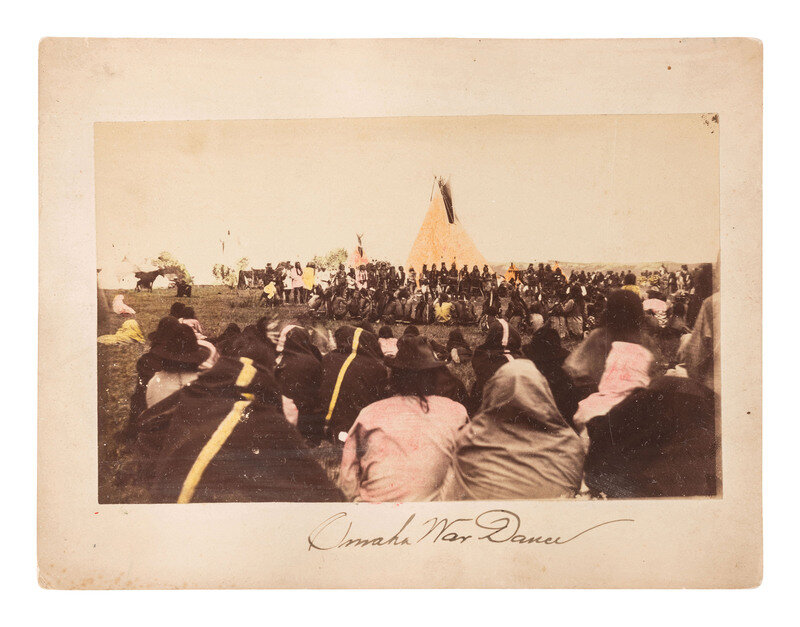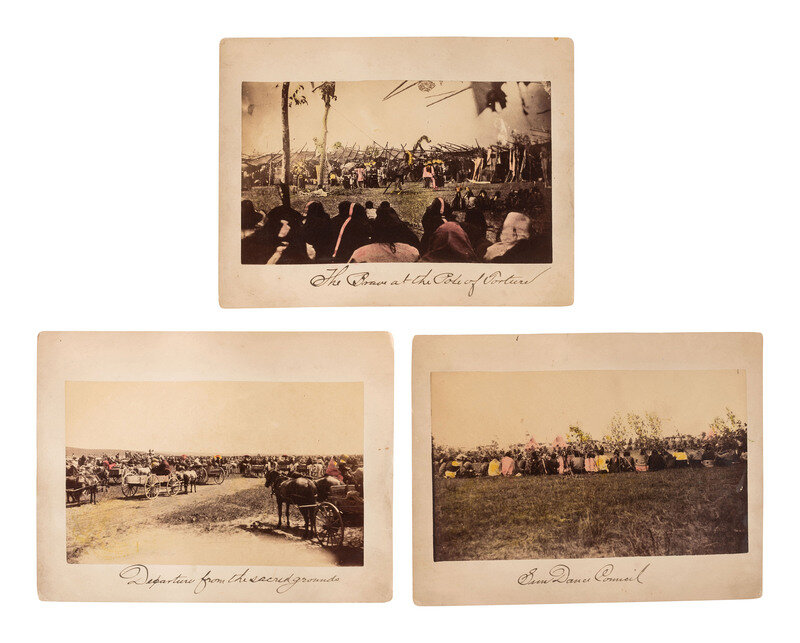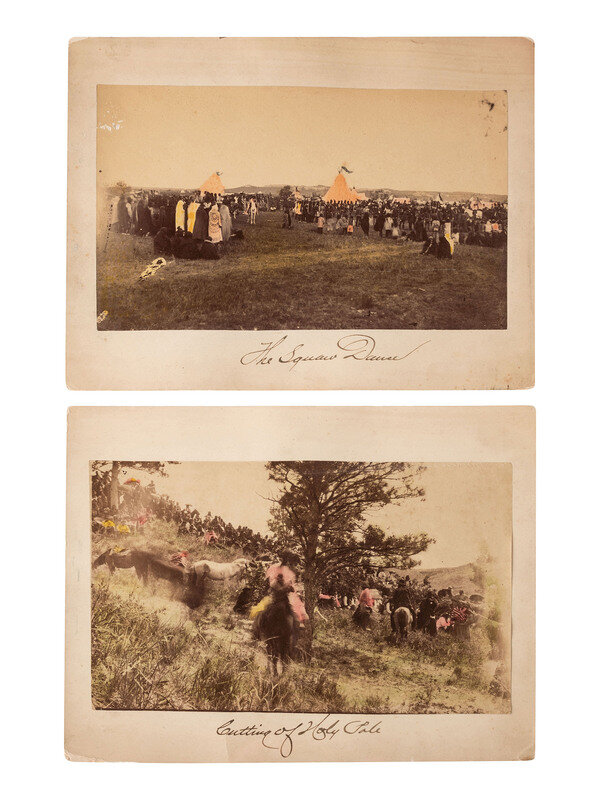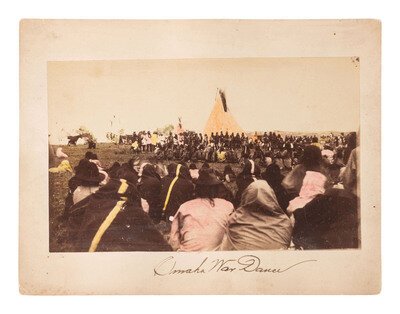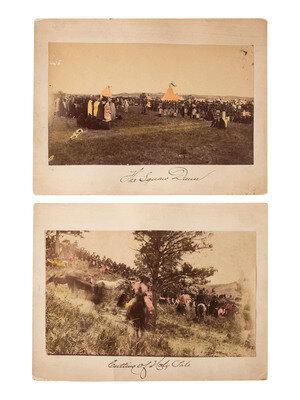[NATIVE AMERICANS]. A group of 6 photographs of Native American ceremonies incl. the Sun Dance. Ca 1880-1883.
Sale 1344 - American Historical Ephemera and Photography
May 31, 2024
10:00AM ET
Live / Cincinnati
Own a similar item?
Estimate
$1,500 -
2,500
Price Realized
$1,270
Sold prices are inclusive of Buyer’s Premium
Lot Description
[NATIVE AMERICANS]. A group of 6 photographs of Native American ceremonies incl. the Sun Dance. Ca 1880-1883.
4 1/2 x 7 1/2 in. hand-colored albumen photographs on 6 1/2 x 8 1/2 in. cardstock mounts (overall very good with striking colors and excellent contrast and normal wear). Manuscript captions below images read: “Omaha War Dance." -- “The Squaw Dance.” -- “The Brave at the Pole of Torture.” -- “Sun Dance Council.” -- “Departure from the Sacred Ground.” -- “Cutting of the Holy Pole.” Provenance: Cowan's Auctions, American History, Including the Civil War, 1 December 2011, Lot 330.
Offered here is a scarce collection of images documenting the Sun Dance, an important ceremony for Native Americans and Indiginous Canadians, particularly Plains Cultures, taken on a reservation likely before the ceremony was outlawed by the US government in 1883.
John A. Anderson, a Swedish-American photographer, took several photographs of Omaha War Dance ceremonies at the Rosebud Reservation in 1881, though the handwriting found on the versos of the extant copies are not exact matches to the handwriting here, and we find no matching examples in our review of his work. The Omaha War dance was performed by the Sicangu Lakota on the Rosebud Reservation through the 1890s, with Anderson photographing the ceremonies. The Sun Dance, however, had been outlawed in 1883 as part of the broader efforts by the US government to eliminate traditional ceremonies and culture. We are unable to pin down the exact location of the ceremonies.
The Department of the Interior would later legalize the ceremony in the late 1920s, and there are documented instances of the ceremony being performed through the mid twentieth century. According to a contemporary account from the Todd County Tribune, it was suspected that the ceremony was performed in secret despite the ban. Because of the risks involved, we doubt that a presumably white photographer would have been allowed to photograph the ceremony, which makes our best guess that these were taken pre-1883.
Overall an important documentation, and quite uncommon. We find no other records besides this exact set, which were last sold at auction in 2011.
Condition Report
Auction Specialist
